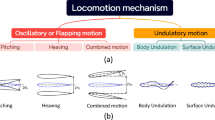Abstract
This work presents an hydrodynamical model of heat stroke, which is a physiopathological state of stress, due to an exposure of animals to an ambient temperature of approximatively 40°C during two hours. The evolution of body temperature during this stress process is characterised by three phases. A first phase of increase is followed by a plateau which occurs before a second phase of increase which can be lethal. The model is based on the analogy of a boat progressively caught in a whirlpool. The evolution of the degree of freedom lost by the boat is mathematically analysed and this study leads to the same three phases. The theoretical curves calculated during this study are well in agreement with the experimental curves obtained with animals. This analogy is compared to a previous one which has been made during another experiment with animals constrained by chemical intoxications. It seems that stress can be considered as a vital vorticity and that hydrodynamic models are powerful tools in understanding this physiopathological state.
Similar content being viewed by others
REFERENCES
Bourdon, L., P. D'Aléo, H. Perrault, N. Pouzeratte and M. Cure (1994). Exercise heat stress in rats: performance and biochemical effects. Journal of Wilderness Medicine 5: 153–162.
Canini, F. and L. Bourdon (1998). Dopamine involvement in thermoregulatory responses to heat in rats. Neurosciences Letters 241: 91–94.
Canini, F. (1998). Mécanismes centraux du coup de chaleur. Thèse Université Lyon I, neurosciences No 149–98.
Csermely, P. (1998). Stress of life from molecules to man. Annals of the New York Academy of Sciences. Vol. 851.
Erskine, D.J. and V.H. Hutchison (1982). Critical thermal maxima in small mammals. Journal of Mammalia 63(2): 267–273.
Guyon, E., J.P. Hurin and L. Petit (1991) Hydrodynamique physique. Inter Editions. CNRS (ed.) pp. 244–245.
Kregel, K.C., P.T. Wall and C.V. Gisolfi (1988). Peripheral vascular responses to hyperthermia in the rat. Journal of Applied Physiology 64(6): 2582–2588.
Luminet, J.P. (1987). Les trous noirs. Belfond Sciences (ed.), Paris.
Viret, J., L. Grimaud and J. Jimenez (1999). Hydrodynamic modelling of stress. Acta Biotheoretica 47(3/4): 173–190.
Wright, G., E. Knecht and D. Wasserman (1977). Colonic heating patterns and the variation of thermal resistance among rats. Journal of Applied Physiology 43(1): 59–64.
Author information
Authors and Affiliations
Rights and permissions
About this article
Cite this article
Viret, J., Tela, L., Canini, F. et al. Hydrodynamic Model of Heat Stroke. Acta Biotheor 48, 259–272 (2000). https://doi.org/10.1023/A:1010277430302
Issue Date:
DOI: https://doi.org/10.1023/A:1010277430302




